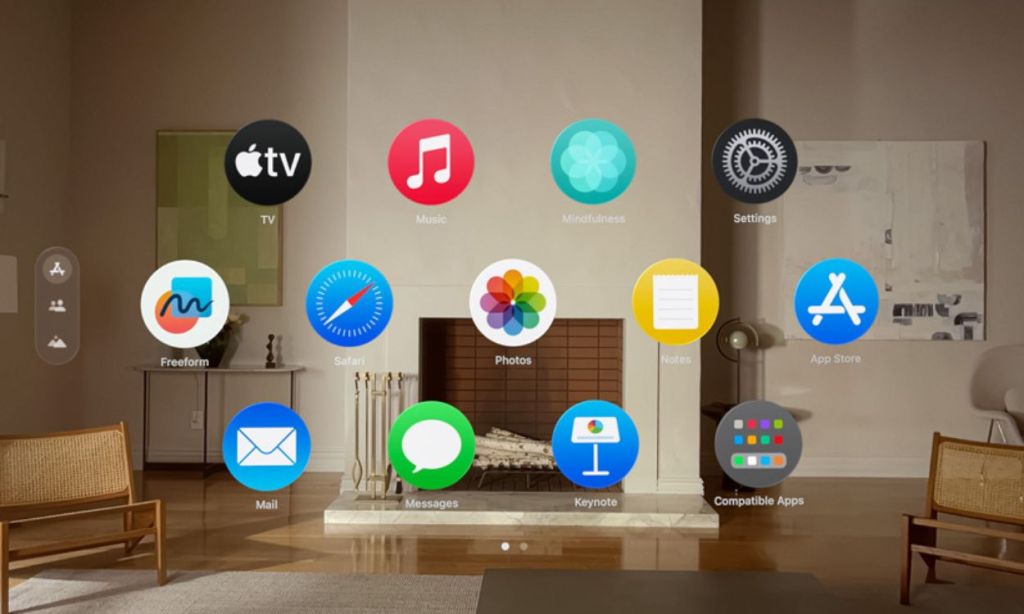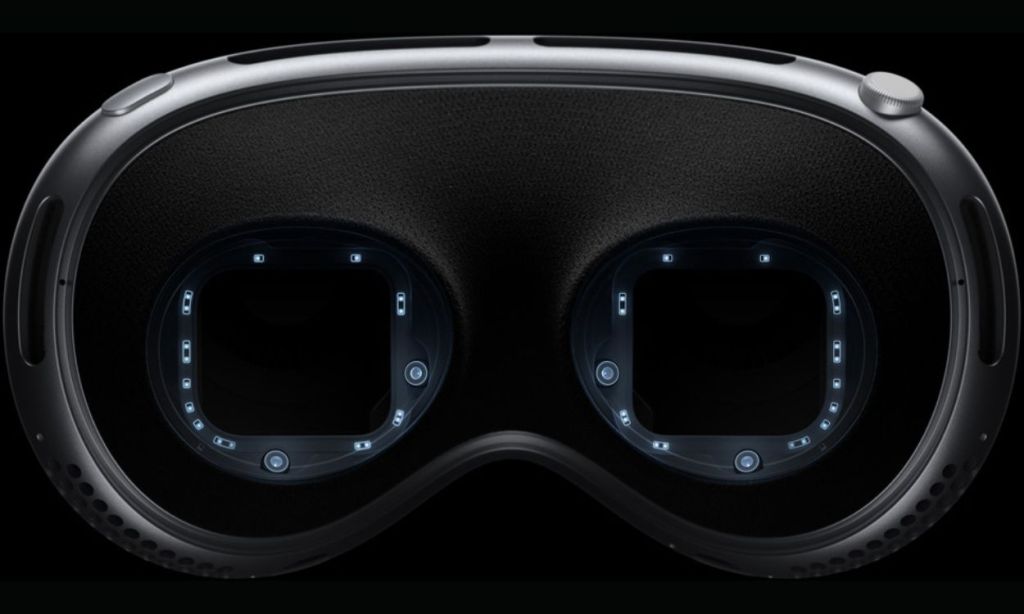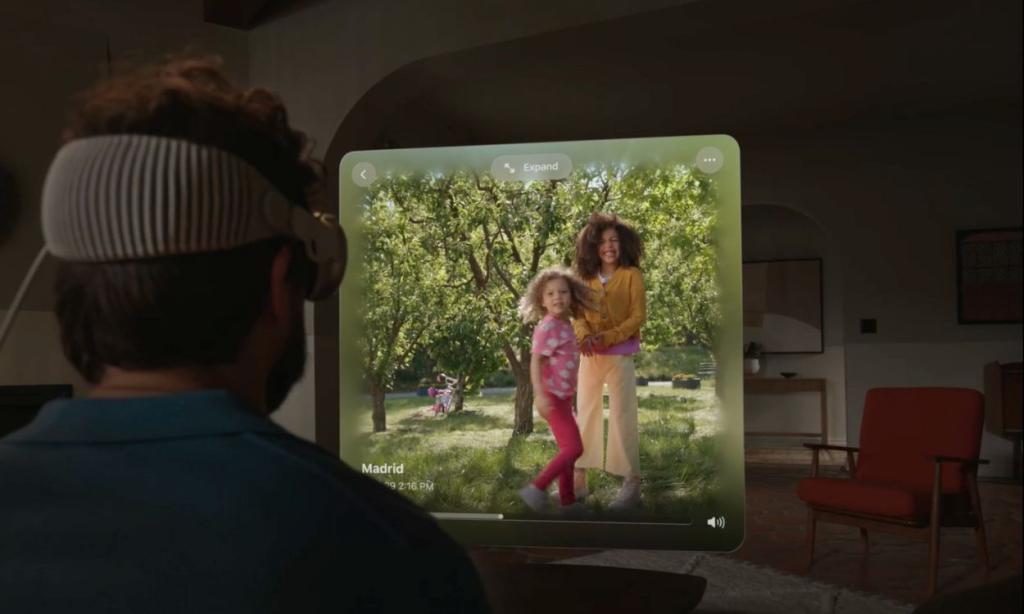- Apple Vision is set to launch on February 2, 2024, with pre-orders beginning January 19 onwards.
- Vision Pro comes packed with highly anticipated features like a Life-centric UI design, a Magical Eye-tracking System, Intuitive Hand Gestures, Full-blown entertainment, and Spatial Gaming.
- Vision Pro is priced at $3,500 and the base variant will have 256GB of storage.
Ever since Apple showcased the Vision Pro at WWDC 2023, it instantly stole all the limelight and became the hottest topic of the Apple ecosystem. After all, it’s the tech giant’s first-ever mixed-reality headset that’s jam-packed with powerful hardware and an unbelievable immersive experience. While the headset has a raft of impressive additions, today, I’ll talk about the best Vision Pro features that blew my mind. I’ve shared 5 Apple Vision Pro features I can’t hold my excitement for. Without any ado, let’s jump to the list right away!
1. Life-centric UI Design

One of the best Apple Vision Pro features I’m excited about is its seamless 3D layered responsive design. While there are many mixed-reality headsets on the shelves, many fail to overlay digital elements on top of the real world properly. Impressively, that’s not an issue with Apple’s headset.
Apple’s Vision Pro has a life-centric, full-scale immersive UI design that seamlessly blends into your real environments. While the 3D layering gives thickness and dimensions to the elements, the UI seamlessly wraps on top of your physical surroundings using advanced tech. The best thing is that the digital overlay in the Vision Pro is dynamic. It means the design responds to natural light and casts virtual shadows on surfaces. Also, it understands scale and distance, giving dynamic responses to your environment and movement.
You can easily place any app anywhere in your environment. Even better, make it as large as you want for comfortable viewing. Vision Pro allows you to work with multiple apps simultaneously, where each app takes its own space and adjusts dynamically to your environment. Imagine what wonders we can do with such a life-size canvas for productivity, multitasking, and whatnot. Open apps for work, video calls, and play, everything can all be done easily.
For me, another standout feature of Vision Pro is the ability to choose the level of immersion. The headset has a rotating crown like the Apple Watch, and you can tune in/out based on how focused you want to be. For instance, when you’re watching a movie, you can fully immerse yourself in the “Environments”. On the flip side, if you’re on a video call with your team, you can lower the level of immersion.
2. Magical Eye Tracking

Unarguably, the high-performance eye-tracking system is the core and one of the most impressive features of the Apple Vision Pro. You can navigate through the entire visionOS interface through your eyes. Isn’t that mind-blowing? Assume your eyes as the mouse cursor, and you can point to any part of the immersive life-size canvas simply by looking at it. For this, Vision Pro uses infrared cameras and a ring of LEDs to project invisible light patterns on your eyes. As a result, it can detect even minute movements of your eye, you don’t even have to tilt your head slightly. Besides figuring out where you’re looking, the intelligent eye-tracking system can also predict when you’re likely to make a click.
How freaky and fantastic it would be to browse through the entire landscape just by looking at it. I mean, no controllers, no extra equipment, just your eyes. If I have one word for the Vision Pro’s eye-tracking system, it’s magical.
That’s not all. To keep the privacy paramount intact, Apple’s spatial computer comes with an Optical ID, a new authentication system that does real-time iris scanning. Also, the headset does all of this by itself and stores it on a dedicated Secure Enclave processor.
3. Intuitive Hand Gestures

One of the best Vision Pro features is that you don’t need any dumb plastic controller or extra equipment. You can use your voice, eyes, and hands to control this AR/VR headset entirely. Honestly speaking, it came as a big surprise and bold move by Apple to fully rely on its combination of camera and sensor hardware and not to have controllers at all. There are four built-in depth sensors, aimed outwards and downwards that intelligently watch your hands and register an input. The best part is the hand gestures are pretty simple and intuitive.
Also, your hand can comfortably rest on the lap and need not be held in the air while interacting with Vision Pro. In addition to the cameras, the headset has additional sensors to enhance real-time perception of 3D depth, even in low-light surroundings.
I have always been a fan of gestures. I feel they make everything look easy, cool, and futuristic. Apple takes the AR/VR headsets to a whole new level with its full controller-less system. Just look at an app/icon and tap your thumb and forefinger tips together to open/click on it. To zoom in/out, simply pinch in the air with both hands and draw them apart or together. You can scroll a page by pinching & pulling down in the air as if there’s an invisible window shade cord. The same goes for scrolling up, left, or right. These super-cool gestures are reminiscent of Tony Stark working in his lab.
To enter an input in the text box, you can look at the letters of the virtual keyboard or use your voice to dictate the input. Collectively, these additions would ensure a more natural and immersive experience when interacting with virtual objects in a 3D space. Unarguably, it’s one of the best Vision Pro features that puts it far ahead of its competition. Although the Meta Quest series boasts a capable hand-tracking system, it is not capable enough to ditch the controllers entirely. I just can’t wait to experience these intuitive and magical interactions with Vision Pro.
4. Full-blown Entertainment

The high-end display is one of the most exciting Apple Vision Pro features that sets it apart from other AR/VR headsets with a relatively low resolution. Apple claims that each display will have a “better resolution than a 4K TV“, which is a welcome and much-needed addition to the MR headset. With dual micro OLED panels and a stunning level of pixel density (23 million pixels), Apple Vision Pro can transfer any room into your personal theatre. With the “Cinema Environment” on board, Vision Pro allows us to watch movies & shows at the same frame rate and aspect ratio as intended by the filmmaker. Also, we can expand your favorite shows and movies up to a perfect size that gives you a feeling like you’re a part of the action, with Spatial Audio adding bells and whistles to the experience.
I can’t wait to enjoy a full-blown IMAX-like experience of my favorite shows and movies. With the Vision Pro, I’ll be able to feel as if I’m in the same room as the characters and can walk right up to them. Also, Disney+ has already collaborated with Apple to introduce awe-inspiring immersive experiences with Vision Pro.
While most AR/VR headsets mainly focus on games and entertainment, Apple Vision Pro is more ambitious with Spatial Computing. It can assist users in remote environments and enhance video calling experiences. I’m excited to experience FaceTime on Vision Pro where I can take advantage of the room and talk to everyone in life-size titles. When I make FaceTime calls with non-headset users, Vision Pro can create Persona- an incredibly lifelike digital avatar that looks exactly like me. Super cool, right?
5. Spatial Gaming

Another Vision Pro feature I’m damn excited about is Spatial gaming. While there are several dedicated AR/VR headsets already available for gaming, I can’t hold up my excitement to get the drift of how Vision Pro transforms spaces around the players. As anticipated during the launch, Vision Pro lets you play any games on the App Store, including over 250 titles on Apple Arcade. Fan favorites like Sonic Dream Team and NBA 2K24 can be enjoyed on a screen as large as you want with support for popular game controllers and incredible audio. That’s not all. There are new spatial games like Super Fruit Ninja, What the Golf?, and Game Room to offer unique, engaging, and unmatched gameplay experiences on Apple Vision Pro.
While I’m talking about Spatial experiences, I can’t forget to mention the Spatial Recording and Playback feature of the Vision Pro. With this amazing standalone computer, you’ll be able to capture spatial photos and videos in 3D, and then relive those precious moments like never before with Spatial Audio. For instance, you can take videos of your kid’s birthday party. That’s not all. With iOS 17.2, Apple introduced a new option in Camera settings to record spatial videos for Vision Pro. I can record spatial video on my iPhone 15 Pro or 15 Pro Max and then play it back on my Vision Pro. How cool is that?
These are the top 5 Apple Vision Pro features I’m excited about. Apple’s headset will be up for pre-orders starting January 19 and hit the shelves as early as February 2, 2024. Are you excited about these high-end AR/VR headsets? Drop your favorite Vision Pro features in the comments below.


















